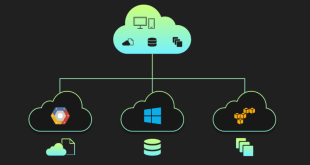As we delve deeper into the era of cloud computing, businesses are rapidly adopting cloud-native applications to enhance flexibility, scalability, and efficiency. However, this shift brings forth new challenges, primarily revolving around security concerns. Protecting sensitive data, applications, and infrastructure in the cloud has become a paramount necessity. In this blog, we explore cloud-native security solutions that can safeguard your applications and ensure a seamless and secure cloud computing experience.
Understanding the Types of Security in Cloud Computing
Cloud computing encompasses a range of security considerations. To fortify your applications effectively, it is crucial to comprehend the different types of security measures required. These include:
- Network Security: Securing data flow and communication channels within the cloud infrastructure.
- Identity and Access Management (IAM): Ensuring proper authentication and authorization of users and resources.
- Data Security: Implementing encryption and access controls to protect sensitive data.
- Compliance and Governance: Adhering to industry standards and regulations to maintain data integrity and privacy.
Emphasizing Cloud Data Security
One of the core aspects of cloud-native security is safeguarding data stored and transmitted in the cloud. The following practices can enhance cloud data security:
- Encryption: Employing robust encryption techniques to protect data at rest and in transit.
- Data Classification: Categorizing data based on sensitivity to apply appropriate security measures.
- Backup and Recovery: Implementing regular data backups and disaster recovery plans to mitigate data loss risks.
- Monitoring and Logging: Employing real-time monitoring and logging solutions to detect and respond to security threats promptly.
Leveraging Cloud Security in Cloud Computing
Cloud service providers (CSPs) offer a suite of security tools to enhance the security of cloud-native applications. Key cloud security features include:
- Firewalls and Network Security Groups: Controlling inbound and outbound traffic to prevent unauthorized access.
- Web Application Firewalls (WAF): Protecting web applications from common exploits and attacks.
- Virtual Private Cloud (VPC): Isolating resources in a private network to enhance security.
- Security Groups: Managing access and traffic flow between instances within a VPC.
Implementing Cloud-Native Security Best Practices
To ensure comprehensive security, organizations need to adopt cloud-native security best practices:
- Microservices Architecture: Decomposing applications into smaller services to limit potential attack surfaces.
- Container Security: Implementing security measures for containerized applications, such as scanning for vulnerabilities and runtime protection.
- DevSecOps: Integrating security practices into the development and deployment pipeline.
- Continuous Security Monitoring: Utilizing automated security monitoring tools to detect and address security threats promptly.
Cloud-Native Security Challenges and Solutions
While cloud-native security solutions offer numerous benefits, they also present unique challenges:
- Shared Responsibility Model: Understanding the shared responsibility between the cloud provider and the customer for security.
- Orchestration Security: Ensuring security throughout the container orchestration process.
- Compliance in Cloud Environments: Adhering to industry-specific compliance standards in the cloud.
- Third-Party Integrations: Addressing security risks associated with third-party integrations.
Securing Multi-Cloud Environments
As businesses adopt multi-cloud strategies for redundancy and performance optimization, securing multi-cloud environments becomes critical. Key considerations include:
- Consistent Security Policies: Implementing consistent security policies across different cloud providers.
- Cloud Security Posture Management (CSPM): Regularly assessing and remediating security risks across multiple clouds.
- Inter-Cloud Communication Security: Ensuring secure communication between different cloud environments.
Future Trends in Cloud-Native Security
As technology continues to evolve, cloud-native security will witness new trends and advancements. Some of the emerging trends include:
- Zero Trust Security: Moving away from perimeter-based security and adopting a trust-based approach.
- AI-Driven Security: Utilizing artificial intelligence to detect and respond to security threats proactively.
- Serverless Security: Addressing security concerns specific to serverless computing.
- Blockchain for Data Integrity: Leveraging blockchain technology for enhanced data integrity and security.
Final Words
In the rapidly evolving landscape of cloud-native applications, security is not an option but a necessity. Fortifying your applications with robust cloud-native security solutions is the key to ensuring data protection, maintaining compliance, and mitigating risks. By understanding the different types of security, emphasizing data security, leveraging cloud security features, and adopting best practices, businesses can navigate the modern age of cloud computing with confidence.
Commonly Asked Questions
1. What is the importance of cloud-native security?
Cloud-native security is crucial to protect sensitive data, applications, and infrastructure in cloud environments. It ensures data integrity, privacy, and compliance with industry standards.
2. How can organizations secure their cloud data effectively?
Organizations can enhance cloud data security by implementing encryption, data classification, regular backups, and real-time monitoring.
3. What are the key challenges in cloud-native security?
The shared responsibility model, container security, compliance in the cloud, and third-party integrations pose challenges in cloud-native security.
4. What is the significance of multi-cloud security?
Multi-cloud security is essential for businesses adopting multiple cloud providers to ensure consistent security policies and secure inter-cloud communication.
5. What are the future trends in cloud-native security?
The future trends include the adoption of zero trust security, AI-driven security, serverless security, and blockchain for data integrity.
 webfily
webfily



